There are essentially two restaurants in one here. Uni is a sushi bar with a small bar with stools plus a few tables; this can only seat around 20 people in all. Uni adjoins Clio - indeed you just walk up a few steps from Uni into the dining room of Clio. At Uni I tried a spoon of uni (sea urchin) and caviar which worked quite well (14/20) as well as a rock shrimp tempura that had nicely cooked shrimps and a sauce with a pleasing and distinct chilli kick to it (14/20). Less good was a dish of eel and foie gras in which the fois gras was rather overcooked, and even the usually robust taste of the eel was obscured by an overly sweet sauce (12/20).
Clio proper is a well decorated and quite spacious dining room. It is aiming firmly up-market, and waiters are formally dressed. For such a smart place the service was surprisingly inept. I had to pursue our waiter in order to order our wine, and then the starters turned up before the wine, a really basic mistake. The wine list itself is very good, with fine growers such as Kistler and Guigal. Mark-ups are fairly hefty, though. The menu is perhaps best described as modern American. The atmosphere is pleasant, with a smart, fairly trendy crowd.
White bread rolls were pleasant but no more than that (14/20). A puree of sweet corn soup had fairly intense sweet corn flavour and arrived with nicely cooked pieces of lobster, pancetta and black trumpet mushrooms as garnish (15/20).
A cassolette of sea urchin and lobster had sea urchin resting at the bottom of an oddly-shaped glass bowl that was awkward to eat out of, topped with a layer of very small pieces of lobster with parsnips and crispy shallots and topped with a garnish of candied lemon (14/20). The miniscule pieces of lobster and the bizarre ship-in-a-bottle style serving dish rather distracted from the good quality sea urchin, though the candied lemon was a welcome texture contrast to the richness of the sea urchin.
A pretty arrangement of marinated yellowtail and tuna used yellowfin tuna rather than the superior bluefin, offered with an oriental style dressing of ginger, garlic and opal basil, garnished with a little seaweed. The dish was well-enough conceived, the components working well together (14/20).
My wild king salmon was poached correctly but tasted rather disappointing; compared to a wild Scottish salmon I had during the summer and cooked at home the flavour of the fish was very dull. The piece of fish was served with kohlrabi, decent but hardly seasonal white asparagus and a misjudged pink grapefruit dressing which paired oddly with the salmon (12/20).
A "merlusa" on the menu is usually spelt merluza but why not just call it hake? (as far as I know merluza is just Spanish for hake). Small pieces of this were glazed with lemon and smoked garlic, served with honshimiji mushrooms, green garlic and boudin noir. I found the fish unexciting and I am unconvinced that the rather eccentric range of accompaniments worked that well together as a complete dish (13/20).
A roasted Muscovy duck was in itself cooked pleasantly pink, but had been laying around too long in the kitchen and was tepid by the time it was served. This was served with miso glazed aubergine, an orange puree and some more white asparagus. The dish was pretty and aside from the temperature of the duck was fine (14/20).
I finished the meal with a few pleasant financiers served with a drizzle of passion fruit coulis (13/20). I find it quite odd that this restaurant, which has been around several years, has recently been catapulted to the perceived top of the Boston dining scene. For example Espalier was a much superior experience. The people I dined with said the meal tonight was less good than on prior visits they had made, so perhaps it was just an off-night, but I couldn't find a single dish that was even at a one Michelin star level. Some of the taste combinations seem to me confused and striving too hard to be exotic. Presentation is good but then the kitchen needs to be more careful to ensure that they have time to plate the dishes while the food is still hot e.g. the tepid duck.










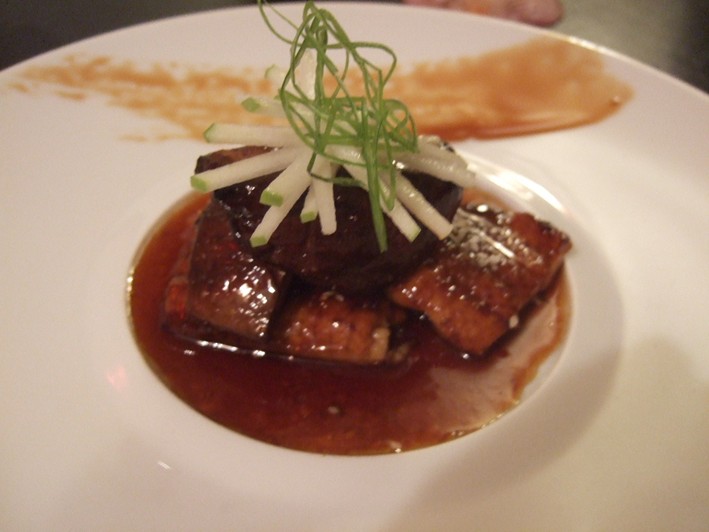



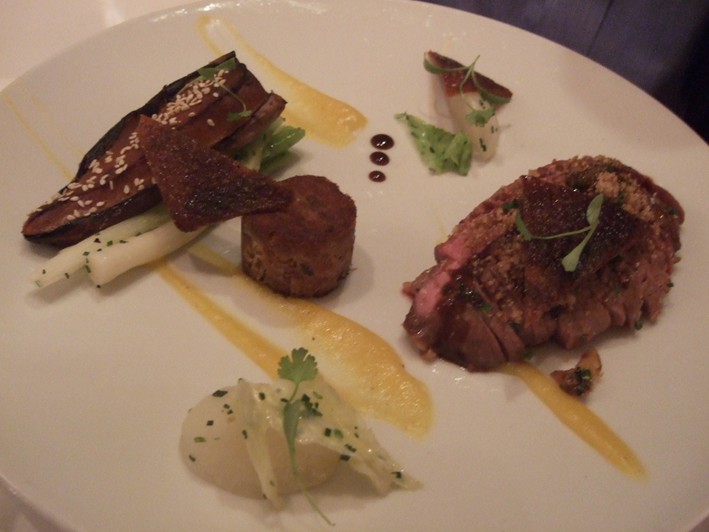

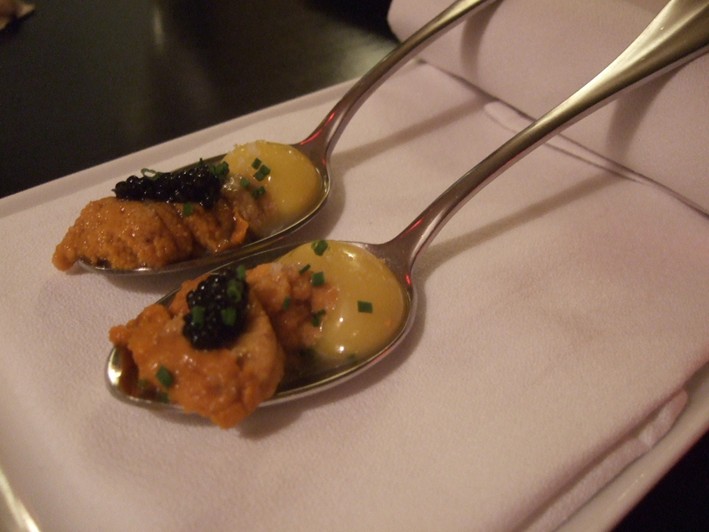
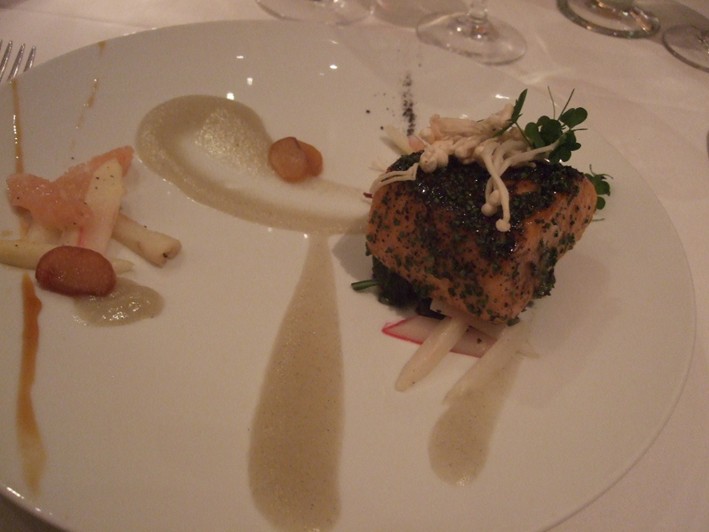
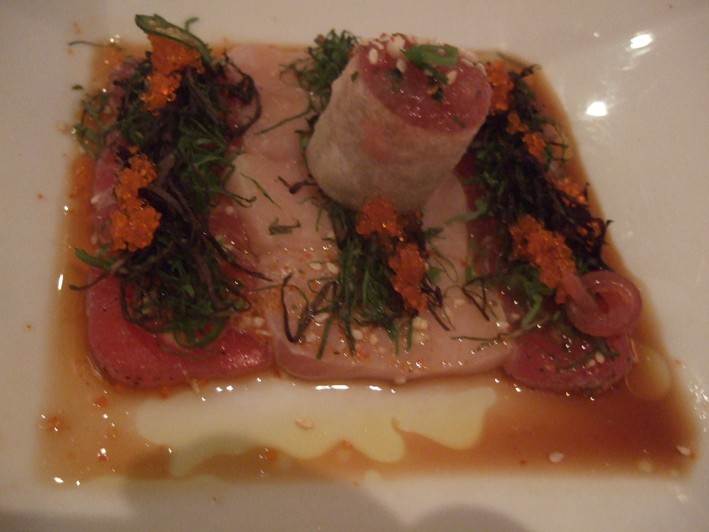

Win
How do you manage to take so many photos in a fine restaurant without becoming a boorish distraction? Im not being accusatory, i just wonder. Sincerely, Win
Bob Dobalina
The reason that the merlusa is not called hake is because hake is often the fish that goes into fish and chips and you might rankle the customer by charging $40 a plate for that fish.